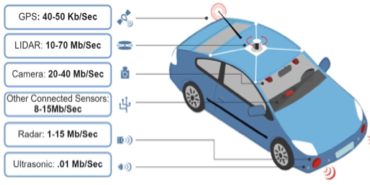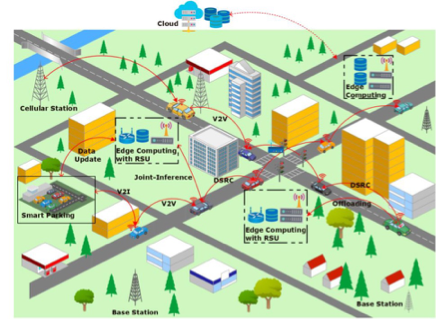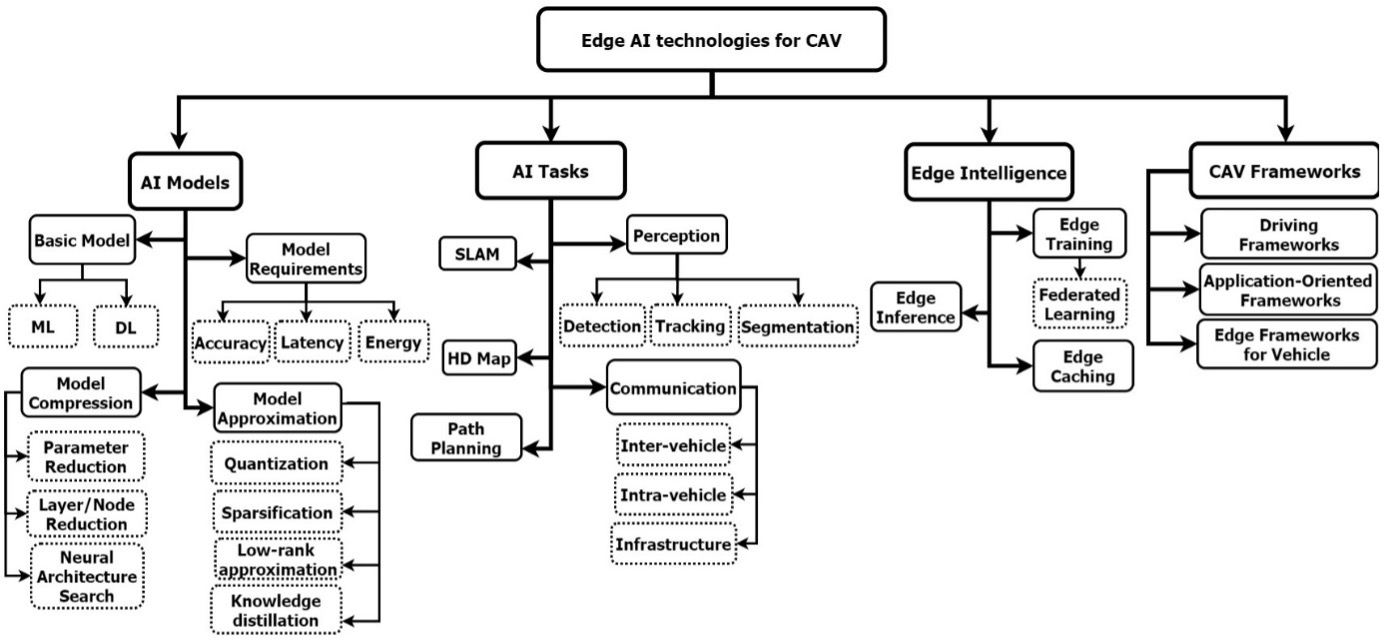The ecosystem of autonomous vehicles and related vehicles is rapidly evolving, and in this phase, the primary attention is on developing AI models and algorithms, that can efficiently process the heavy volume of data received from surrounding vehicles, infrastructure sensors, and data sensed by on-board automotive sensors. Currently proposed and used AI models relies on perception sensors such as cameras, LiDAR, and radar. The data generated from these sensors is massive, In fact, this data volume can rise up to 20 Terabytes in an hour, influenced by count of sensors, sensors specifications, driving duration/conditions and the data rates. To process such volume of data, large and dense AI models are deployed at the onboard high processing computing devices. This approach, however, brings along a pressing concern – significant power consumption by the on-board computing units and devices within the vehicle.

This power consumption is further increased by the exchange of data between infrastructure sensors and vehicles, particularly for collaborative vehicle applications and fully connected autonomous vehicles. This communication process introduces another layer of energy consumption on communication and networking, thereby raising a critical challenge in the field. Despite considerable advancements in sensory technologies, wireless communication, computing, and AI/ML algorithms, the energy efficiency puzzle remains open. It’s a research challenge that calls for the integration of these technological combined to achieve optimal energy usage in communication and computation.

Our recently published review paper addresses precisely this concern by providing a taxonomy of Edge AI technologies for connected autonomous vehicles. We’ve embarked on a comprehensive survey of the domain, examining the spectrum of connected vehicular services, vehicular communications, approximation techniques, and Edge AI solutions. Our central focus is on energy efficiency, and we’ve delved into the software approximation techniques and enabling frameworks that focus at the on-board computing, cooperative and collaborative inference and publicly accessible datasets concerning autonomous driving. Our survey aims to provide fundamentals on the AI models used in the collaborative driving service development on low-power and memory-constrained systems, as well as energy optimization for autonomous vehicles.

In conclusion, our paper doesn’t just highlight the open problems, gaps and challenges, it also offers pipeline dedicated for edge assisted driving services deployment. We’ve explored a multitude of autonomous driving applications – from perception algorithms to SLAM, HD maps, and vehicular communications. The focus has been on computational complexity and energy efficiency in resource-constrained environments. We’ve unveiled communication-efficient approaches, software approximation techniques, and energy-efficient deployment strategies that pave the way for smarter and more sustainable autonomous driving. Curious to learn more? Dive into our paper’s research outlook and conclusion, where we lay out our vision for an energy-efficient future in edge-assisted autonomous driving applications! 🌍🚀
The paper is available at: https://zenodo.org/record/8252571
IEEE print is available at: https://ieeexplore.ieee.org/document/10213996
